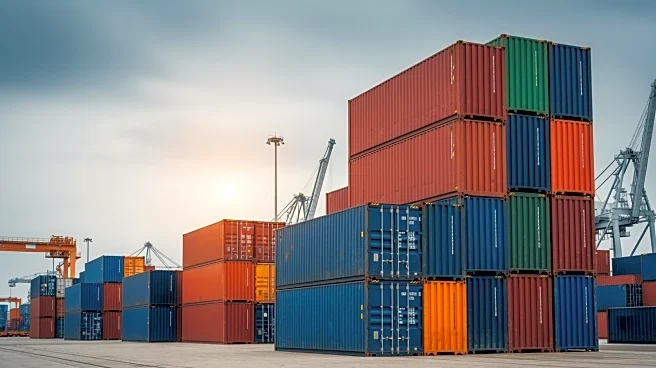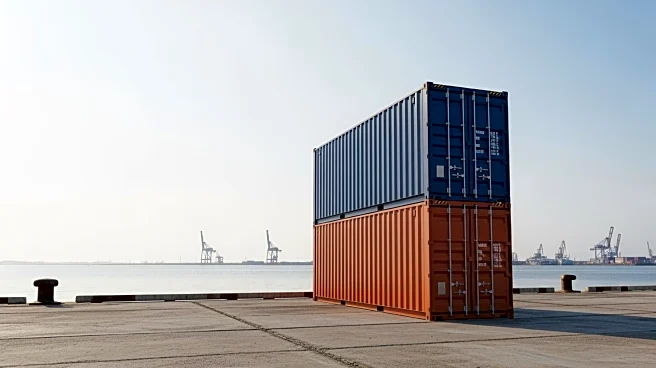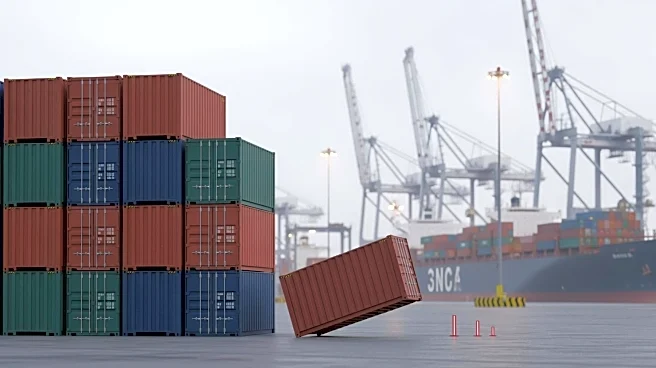What's Happening?
U.S. container imports have decreased by 8.4% from August, reaching over 2.3 million TEUs in September, according to Descartes' Global Shipping Report. This decline is attributed to new Section 301 vessel
fees and the impending expiration of the U.S.-China tariff truce. Imports from China fell significantly, with major categories such as aluminum and footwear experiencing steep declines. The top 10 U.S. ports also saw a 7.9% decrease in volumes, with significant drops in Long Beach and Baltimore. The ongoing trade policy risks and legal challenges surrounding tariffs add complexity to import planning, despite the resilience shown by U.S. ports.
Why It's Important?
The contraction in U.S. container imports highlights the ongoing challenges faced by the global shipping industry amid geopolitical tensions. The new tariffs and trade policy uncertainties could lead to increased costs for businesses reliant on imports, potentially affecting supply chains and consumer prices. The decline in imports from China, a major trading partner, underscores the impact of trade tensions on bilateral trade relations. The situation also raises concerns about the broader economic implications, as disruptions in trade can affect economic growth and employment in related sectors.
What's Next?
The expiration of the U.S.-China tariff truce on November 10 could lead to further trade disruptions if no new agreement is reached. Businesses may need to adjust their supply chain strategies to mitigate risks associated with increased tariffs and shipping costs. The U.S. Supreme Court's review of the Liberation Day tariffs could also influence future trade policies. Stakeholders, including policymakers and industry leaders, will need to closely monitor these developments to adapt to the evolving trade landscape.












